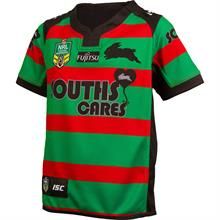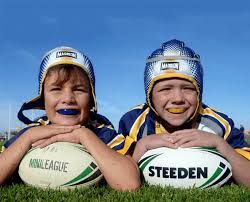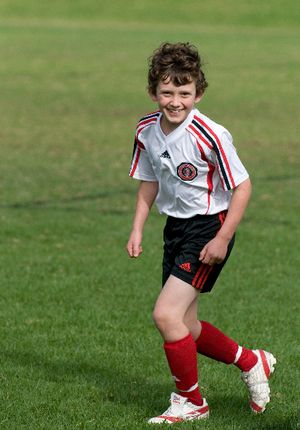Football For Children In Australia

Football for many is a religion in Australia and most boys little and big will support a team and during the season talk constantly about the footy.
The major international codes of football for children in Australia are Soccer, Rugby Union and Rugby League. There is also a local variant of football known as Australian Rules which is popular in some States.
Soccer, as is well known, is played without the ball being picked up by the players (except for the goal keeper). With the Rugby forms of the game (which are very similar), the ball is normally carried, with the intention of placing it, if possible, past the goal line of the opposing team.
Different forms of the game of football had developed during the 19th century at a number of British private schools; in particular, at Eton, Rugby and Harrow. Two styles of play emerged from these games. One was essentially a kicking game and became known as Association Football, or Soccer. The other style was the one played at Rugby and involved carrying the ball; it also permitted tackling to stop opposing players in possession of the ball.

In the early 20th century, a professional breakaway group of Rugby players was formed in Australia (with a few changes to the rules of the game) and this was called Rugby League. The original form has continued and is known as Rugby Union.
Soccer

After the second world war, there was a huge influx of migrants into Australia from Europe and the UK. As these were soccer playing nations, support for that form of the game has continued to grow. Many Australian parents favour soccer as it costs little to participate and there is less physical contact than with the Rugby styles of football. This also makes it possible for mixed teams of boys and girls and it also appeals to the parents of young children.
Soccer is available as a sport in many schools and is considered to be the fastest growing major sport. There are also many local community soccer clubs for children of all ages and regional competitions are available throughout the country.
Soccer administration is under the auspices of Football Federation Australia, which is the governing body, encourages the development of the game and organises major competitions. A restructuring of the administration took place in 2005 and the game has moved to provide a broader base for participants. A limited number of clubs formed what is known as the A-League (the highest national level of play) and the game has largely moved away from its earlier ethnic ties.
Rugby Union

The mainstay of Rugby Union in Australia has been the private schools of NSW and Queensland, which also account for 82% of the game's senior players. The private schools have maintained a preference for the Union style of football and this sometimes leads it to be seen as an elitist game.
Australian Rugby Union (ARU) is the governing body and co-ordinates club games throughout the country, as well as events for international teams. Participation of children in Rugby Union is largely through the private schools, who graduate as young adults into local and University-based clubs.
Rugby League
As with Rugby Union, the vast majority (nearly 85%) of Rugby League players are based in NSW and Queensland. The governing body, National Rugby League (NRL), is based in Sydney. Participation of children within those States is widespread and the game is frequently played by children in both the State and Catholic school systems.
As a result, the game is aavailable throughout the community in those two States and enjoys the support of some large clubs which help to finance the game at local level.
There have also been initiatives to adopt a safe play code for children, which has seen the introduction of a modified form of Rugby League, such as Mod League and Mini Footy to assist young children in the developing stages. Competitions aimed at school children have also been introduced. These include Joey League, League of Legends, and League Sevens. These use modified rules, such as Tags and Sevens.
The various codes of football for children in Australia are alive and well - in many respects growing vigorously. Although it's largely a male dominated sport, the different forms of the game do have female participation which is not only at the support and administrative level. Girls are also active in soccer teams and in other forms of play, such as Tag Football.
